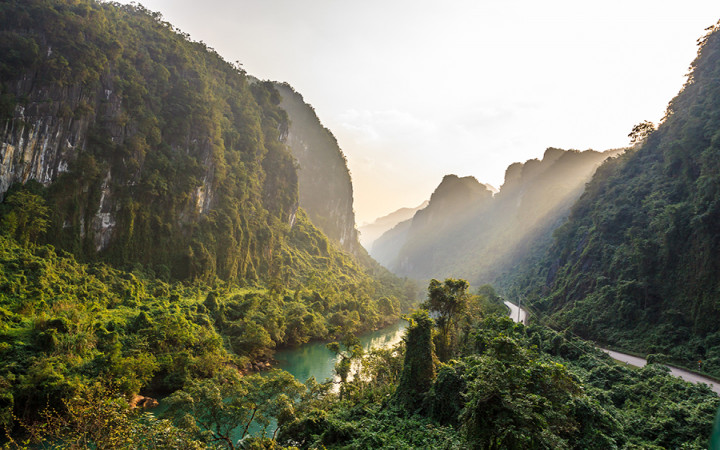Today’s Wonder of the Day was inspired by Dana. Dana Wonders, “Are there any recently discovered caves?” Thanks for WONDERing with us, Dana!
Do you love to explore the world around you? Earth is our home, and it offers so many examples of natural beauty and WONDER that it would be impossible to experience it all in just one lifetime.
From towering waterfalls and powerful volcanoes to mountains that reach into the sky and sprawling rainforests that teem with amazing varieties of life, there's no shortage of places to explore. However, focusing on those things is only scratching the surface — literally — of what Earth has to offer.
Too often, we forget about the unexplored areas that lie beneath Earth's surface. Have you ever been inside a cave? If so, you know that there's an entirely different world waiting to be experienced deep below Earth's surface.
Scientists estimate that many caves have been around for millions of years, because they believe it takes that long for the natural processes of erosion from water to form caves. That's why it's a bit surprising that what most experts now consider to be the world's largest cave wasn't discovered until 1991!
Hang Son Doong cave ("Mountain River Cave" in English) sits in the middle of Phong Nha-Ke Bang National Park in central Vietnam near the Laos border. Its entrance was first discovered in 1991 by Ho Khanh, a local farmer. He wasn't able to explore it because the terrain was too steep.
Although he reported his discovery to the British Caving Research Association (BCRA), Khanh got lost trying to retrace his steps to the cave entrance. Its location was lost for nearly 20 years before he happened upon it again in 2008.
In 2009, he was able to lead Howard and Deb LImbert from the BCRA to the cave's entrance. The British cavers were the first to explore Hang Son Doong, and their discoveries amazed the world.
Why did Hang Son Doong remain undiscovered for so long? The primary issue is its location and difficult access. One must trek through dense jungle and cross multiple rivers to reach the cave entrance. Getting to the entrance, however, requires a rappel of over 260 feet down jagged stone walls.
Once inside the cave, visitors are amazed by its size. The entire length of the cave is over 5.5 miles, but the main passage alone is more than three miles long, over 650 feet tall, and nearly 500 feet wide.
To put that in perspective, the main passage is so large that you could fit an entire New York City block — complete with 40-story skyscrapers — inside it. In fact, a Boeing 747 could fly through the cavern untouched!
The cave features an underground river, a lush jungle, and its own weather system that creates misty clouds near its ceiling. The jungle is the result of dolines, which are large areas where the cave ceiling collapsed and allowed sunlight and rain to enter.
Trees and other vegetation grow abundantly in the cave over 600 feet below Earth's surface. Some trees reach heights of nearly 100 feet. The underground jungle has become a home to many animals normally not found underground, including monkeys, flying foxes, and several types of birds.
Hang Son Doong also boasts the largest stalagmite ever discovered. Called "Hand of Dog" because of its shape, the stalagmite stands approximately 262 feet tall.
The Vietnamese government opened Hang Son Doong to the public in 2013. However, to protect its delicate ecosystem, only one tour company, Oxalis, is allowed to take adventurers to the cave, and the number of people able to access the cave each year is very limited.
If you're up for the adventure of a lifetime, tours of Hang Son Doong start at $3,000 per person. You'll need to be ready to trek through the jungle, swim across rivers, rappel down stone mountains, and crawl under and climb over obstacles. The reward is worth it, though, when you get to camp multiple nights inside the world's largest cave!




